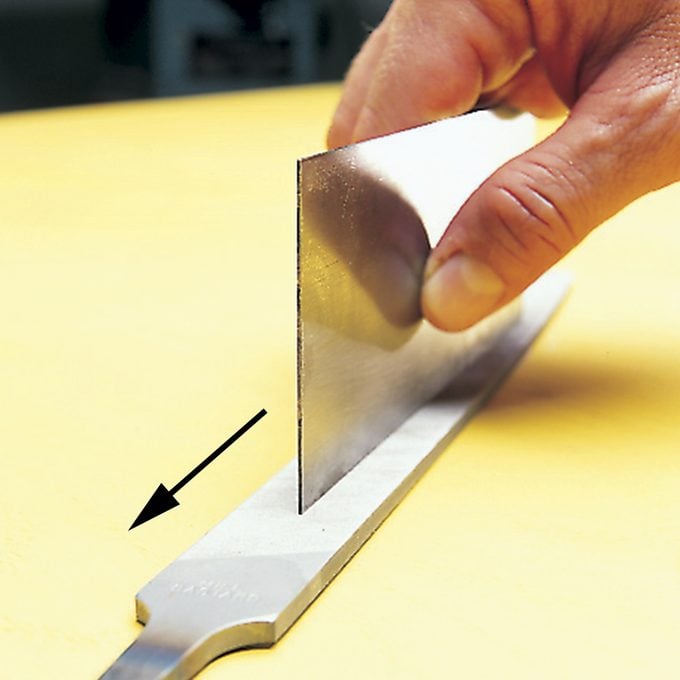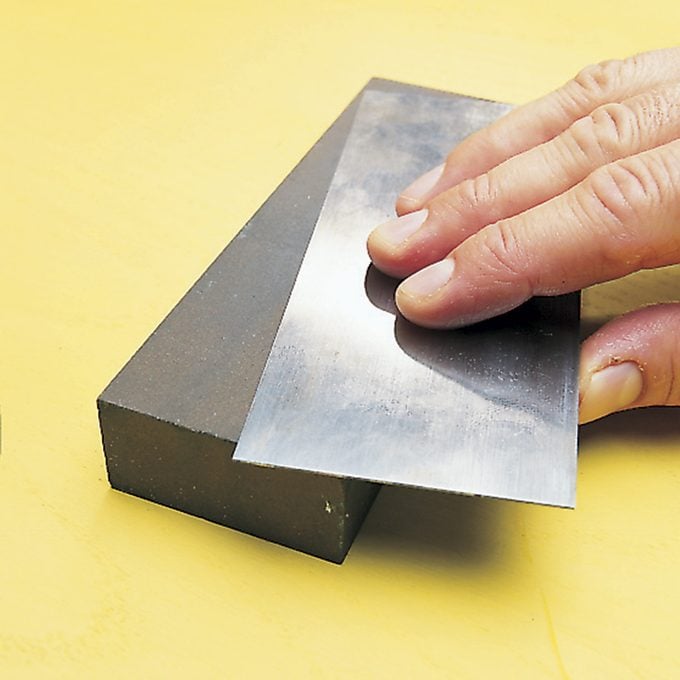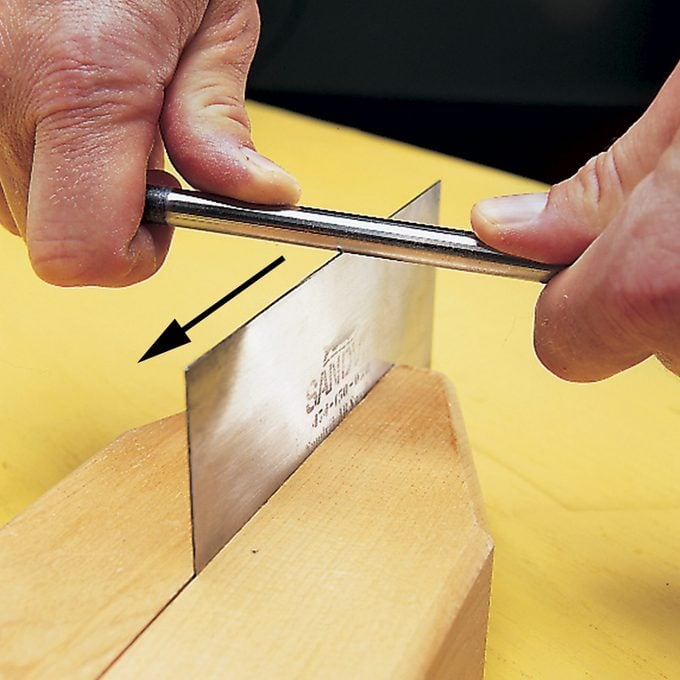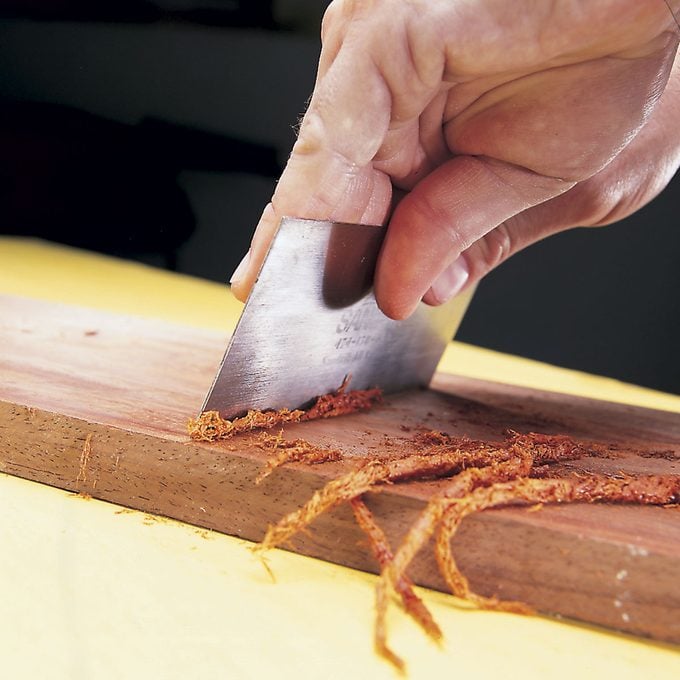Once you try a cabinet scraper to smooth flat surfaces or curved sculpted forms, you’ll want to use it on all your projects. This tool has greatly reduced the sand-ing time in my shop. It creates a polished surface on even the orneriest wood, and it’s easy to sharpen and use. It’s avail-able for $7 at wood specialty stores.
Sharpen and Use a Cabinet Scraper
Sharpening

Lay a bastard file on a workbench and file the scraper’s long thin edges flat, smooth and at 90 degrees to the sides of the tool.

Polish the two sides and the narrow edge on a sharpening stone. This removes the burr created by filing and leaves a sharp 90-degree angle along the scraper’s edge.

Use a burnisher ($10)—or the shaft of a chisel, carving gouge or screwdriver—to create the cutting edge. (The metal you use for burnishing needs to be just a little harder than the scraper.) Push down on the burnisher while sliding it along the scraper’s edge. The burnisher’s harder steel presses the scraper’s edges to one side to create the cutting edge. Make three to four passes with the burnisher and feel the scraper’s edge with your finger; stop burnishing when the edge feels like a light wire. Now test the scraper on a piece of scrap wood.
Using

Hold the scraper in both hands, angled toward you, and flex it to create a slight belly in the center as you pull it along the wood. Press down firmly—if the edge is sharp, you’ll cut thin curls like a plane. When the scraper starts creating dust or begins to chatter, it needs reburnishing. Beware! In heavy use, a sharp scraper can get hot and burn your fingers. Pause frequently to brush away the curls and check your progress.



















